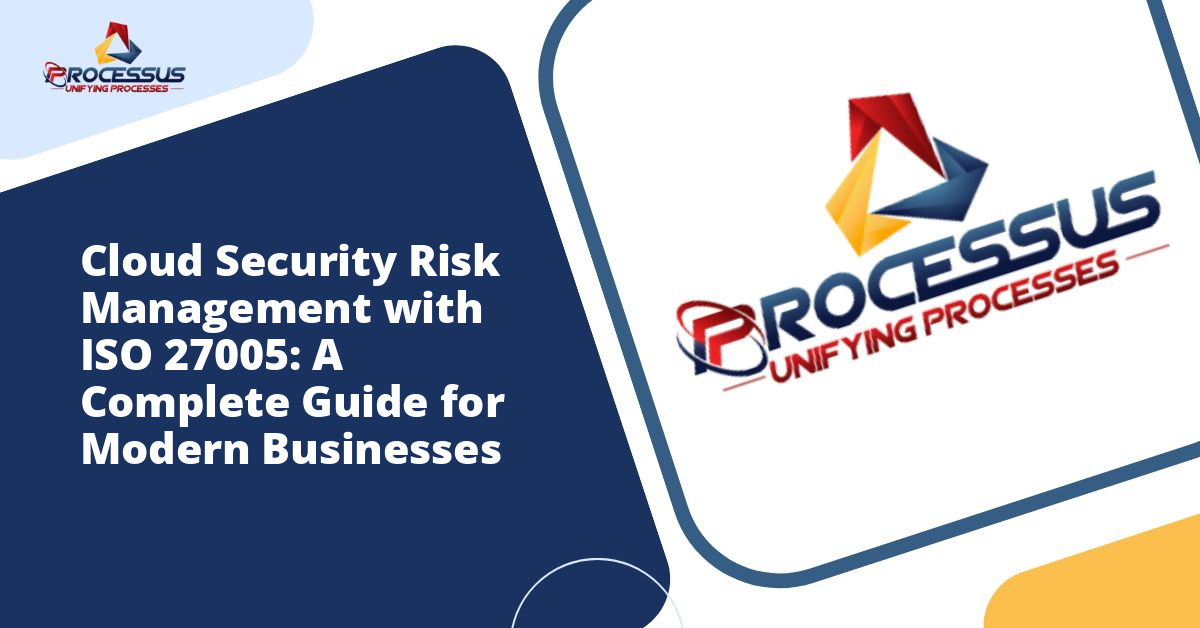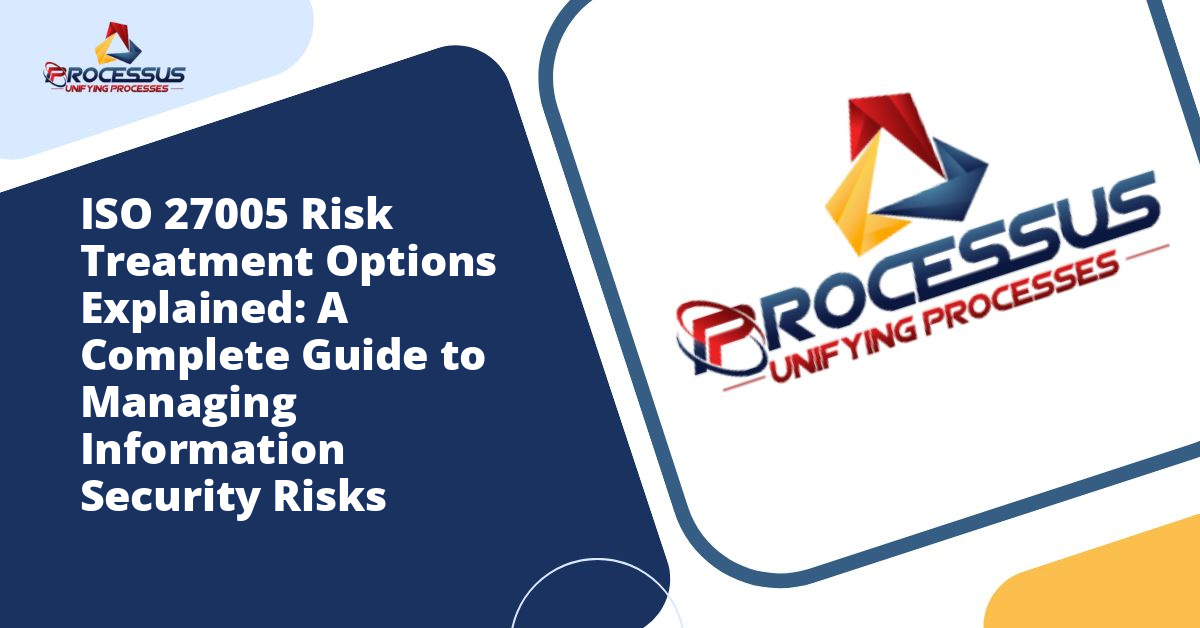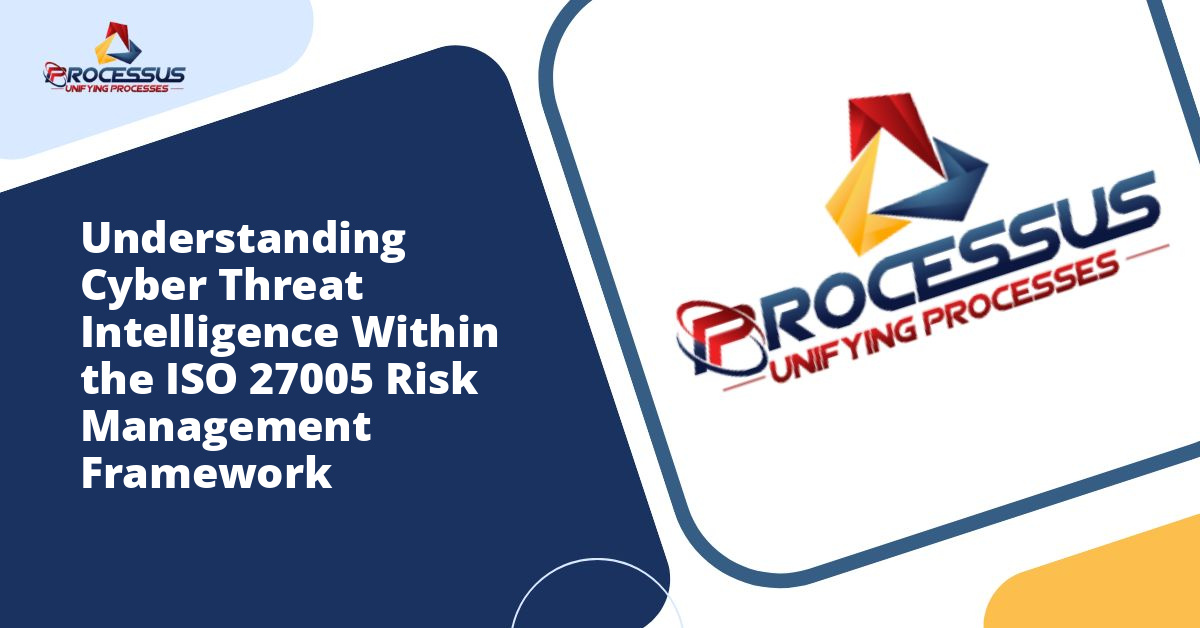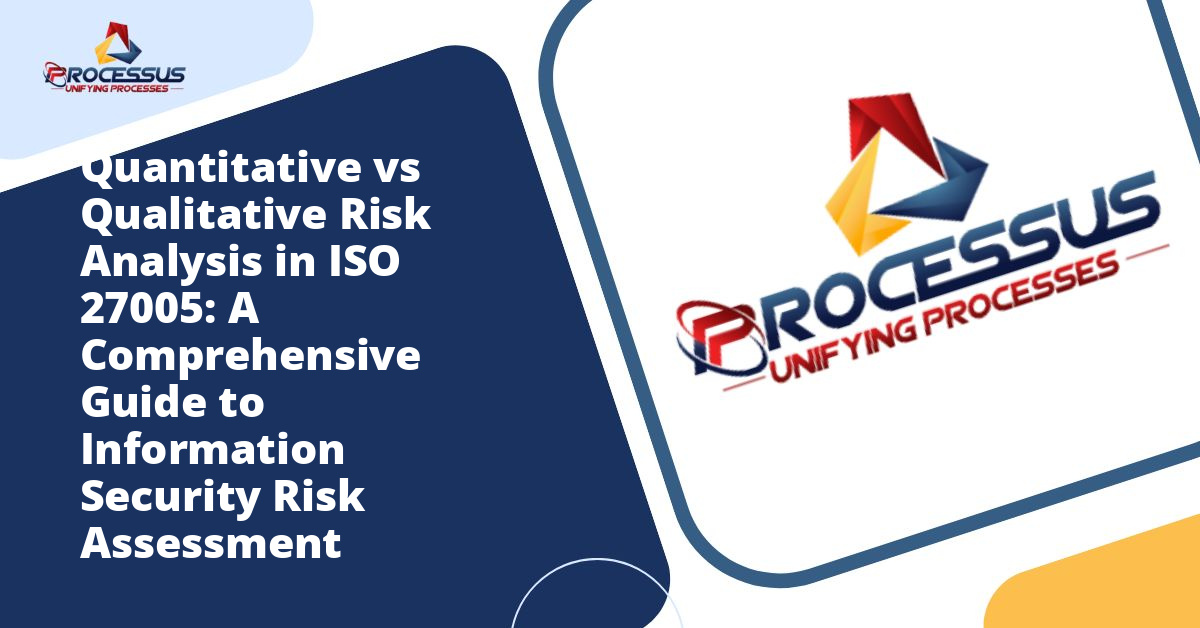In today’s digital landscape, organizations face an ever-growing array of cybersecurity threats and data protection challenges. As businesses increasingly rely on information technology to drive operations, the need for robust information security management systems has never been more critical. Two international standards stand at the forefront of this effort: ISO 27001 and ISO 27005. While each serves a distinct purpose, these standards work in tandem to create a comprehensive framework for managing information security risks.
Understanding how these standards complement each other is essential for organizations seeking to build resilient security infrastructures. This article explores the relationship between ISO 27005 and ISO 27001, examining their individual roles and demonstrating how their integration creates a stronger, more effective approach to information security management. You might also enjoy reading about Quantitative vs Qualitative Risk Analysis in ISO 27005: A Comprehensive Guide to Information Security Risk Assessment.
Understanding ISO 27001: The Foundation of Information Security Management
ISO 27001 represents the international standard for information security management systems (ISMS). Published by the International Organization for Standardization (ISO) and the International Electrotechnical Commission (IEC), this standard provides a systematic approach to managing sensitive company information, ensuring its confidentiality, integrity, and availability. You might also enjoy reading about ISO 27005 Risk Assessment Methodology: A Complete Step-by-Step Guide for Information Security.
At its core, ISO 27001 establishes a framework that helps organizations identify, assess, and manage information security risks. The standard is applicable to any organization, regardless of size, industry, or geographical location. It offers a structured methodology for implementing, maintaining, monitoring, and continually improving an ISMS.
Key Components of ISO 27001
ISO 27001 comprises several fundamental elements that work together to create a comprehensive security management system:
- Leadership and commitment: Senior management must demonstrate leadership and commitment to the ISMS by establishing policies and ensuring resources are available.
- Risk assessment and treatment: Organizations must identify information security risks and implement appropriate controls to address them.
- Security controls: The standard includes Annex A, which lists 93 controls (in the 2022 version) across various categories that organizations can implement based on their risk assessment.
- Performance evaluation: Regular monitoring, measurement, analysis, and evaluation of the ISMS ensure its continued effectiveness.
- Continual improvement: Organizations must continuously enhance their ISMS based on performance data and changing circumstances.
The Certification Advantage
One of the distinguishing features of ISO 27001 is that it is a certifiable standard. Organizations can undergo formal audits by accredited certification bodies to demonstrate compliance. This certification serves multiple purposes: it provides assurance to customers and stakeholders, may be required for certain business relationships or regulatory compliance, and demonstrates a commitment to information security best practices.
Exploring ISO 27005: The Risk Management Specialist
While ISO 27001 establishes the overall framework for an ISMS, ISO 27005 focuses specifically on information security risk management. This standard provides guidelines for conducting risk assessments and implementing risk treatment processes within the context of an ISMS based on ISO 27001.
ISO 27005 is not a certifiable standard; rather, it serves as a comprehensive guide that offers detailed methodology and best practices for managing information security risks. It expands upon the risk management requirements outlined in ISO 27001, providing practical guidance on how to execute these processes effectively.
The ISO 27005 Risk Management Process
ISO 27005 outlines a structured approach to information security risk management that includes several key phases:
- Context establishment: Defining the basic criteria necessary for risk management, including the risk evaluation criteria, impact criteria, and acceptance criteria.
- Risk identification: Systematically finding, recognizing, and describing risks that could affect the achievement of objectives.
- Risk analysis: Comprehending the nature of identified risks and determining the level of risk by examining the likelihood and consequences of risks.
- Risk evaluation: Comparing risk analysis results with risk criteria to determine whether the risk is acceptable or requires treatment.
- Risk treatment: Selecting and implementing appropriate options for addressing risks.
- Risk acceptance: Making informed decisions about which risks are acceptable to the organization.
- Risk communication: Exchanging and sharing information about risk with stakeholders.
- Risk monitoring and review: Continuously checking and tracking risks and the risk management process.
Methodological Flexibility
One of the strengths of ISO 27005 is its flexibility. The standard does not prescribe a single methodology for risk management; instead, it accommodates various approaches and methodologies that organizations may choose based on their specific needs, industry requirements, and existing practices. This adaptability makes it applicable across diverse organizational contexts.
The Synergy Between ISO 27001 and ISO 27005
While ISO 27001 and ISO 27005 can function independently, their true power emerges when they work together. ISO 27001 requires organizations to conduct risk assessments and implement risk treatment processes, but it does not provide detailed guidance on how to execute these activities. This is precisely where ISO 27005 adds tremendous value.
Complementary Roles
ISO 27001 establishes the requirement for risk management within the ISMS framework, specifying that organizations must have processes for risk assessment and risk treatment. ISO 27005, in turn, provides the detailed methodology and practical guidance for fulfilling these requirements. Together, they create a complete solution: ISO 27001 defines what needs to be done, while ISO 27005 explains how to do it.
This relationship can be understood through a simple analogy. If building an ISMS were like constructing a house, ISO 27001 would be the architectural blueprint that shows the structure’s design and requirements, while ISO 27005 would be the detailed construction manual that provides step-by-step instructions for specific tasks.
Enhancing Risk Assessment Quality
Organizations implementing ISO 27001 must conduct risk assessments, but the standard itself offers limited guidance on the specifics of this process. ISO 27005 fills this gap by providing comprehensive methodologies for identifying assets, threats, and vulnerabilities, as well as frameworks for evaluating likelihood and impact.
By following ISO 27005 guidelines, organizations can conduct more thorough and systematic risk assessments that meet ISO 27001 requirements. This results in better identification of information security risks, more accurate risk evaluation, and more effective risk treatment decisions.
Strengthening Risk Treatment Planning
Once risks have been assessed, organizations must determine how to address them. ISO 27001 outlines the need for risk treatment but does not elaborate on the various options available or how to select the most appropriate approach. ISO 27005 provides detailed guidance on risk treatment options, including risk modification, risk retention, risk avoidance, and risk sharing.
This detailed guidance helps organizations make informed decisions about which controls from ISO 27001 Annex A to implement, or whether custom controls are necessary for their specific risk landscape. The result is a more strategic and cost-effective approach to risk treatment.
Practical Implementation: Bringing the Standards Together
Understanding the theoretical relationship between these standards is valuable, but the real benefit comes from practical implementation. Organizations seeking to leverage both standards should follow a structured approach that integrates their requirements and guidance.
Establishing the Foundation
Begin by committing to ISO 27001 as your ISMS framework. This involves securing management support, defining the scope of your ISMS, and establishing information security policies. At this foundational stage, recognize that you will need a robust risk management process, which is where ISO 27005 will become essential.
Defining the Risk Management Framework
Use ISO 27005 to develop your detailed risk management methodology. This includes establishing risk criteria, defining your risk assessment approach, and creating templates and tools for conducting risk assessments. This framework should align with ISO 27001 requirements while incorporating the detailed guidance provided by ISO 27005.
Conducting Risk Assessments
Execute risk assessments following the ISO 27005 methodology you have adopted. Identify your information assets, determine relevant threats and vulnerabilities, assess the likelihood and impact of potential security incidents, and evaluate the resulting risks against your established criteria. Document these assessments thoroughly to demonstrate compliance with ISO 27001 requirements.
Implementing Risk Treatment
Based on your risk assessment results, develop a risk treatment plan using guidance from both standards. ISO 27001 Annex A provides a comprehensive catalog of security controls to consider, while ISO 27005 offers frameworks for determining which controls are most appropriate for your specific risks. Implement selected controls and document your decisions, including any residual risks that remain after treatment.
Monitoring and Continuous Improvement
Both standards emphasize the importance of ongoing monitoring and continuous improvement. Establish processes for regularly reviewing your risk landscape, monitoring the effectiveness of implemented controls, and updating your risk assessments as your organization and threat environment evolve. ISO 27005 provides guidance on risk communication and monitoring that supports the continual improvement cycle required by ISO 27001.
Benefits of Integrating ISO 27001 and ISO 27005
Organizations that successfully integrate these two standards realize numerous benefits that extend beyond simple compliance.
Enhanced Security Posture
The combination of ISO 27001’s systematic framework and ISO 27005’s detailed risk management methodology creates a more robust security posture. Organizations gain a clearer understanding of their risks and implement controls that directly address their most significant vulnerabilities.
Improved Decision Making
ISO 27005’s structured approach to risk assessment provides leadership with better information for making strategic decisions about security investments. Rather than implementing controls based on intuition or generic recommendations, organizations can prioritize resources based on actual risk levels.
Stakeholder Confidence
Implementing both standards demonstrates a mature approach to information security management. Customers, partners, and regulators gain confidence knowing that the organization not only has an ISMS in place but also follows internationally recognized best practices for risk management.
Regulatory Alignment
Many regulatory frameworks and industry standards require risk-based approaches to information security. By integrating ISO 27001 and ISO 27005, organizations create documentation and processes that can satisfy multiple compliance requirements simultaneously, reducing duplication of effort.
Organizational Resilience
The dynamic risk management approach promoted by ISO 27005, combined with the systematic ISMS framework of ISO 27001, helps organizations become more resilient. They can better anticipate, prepare for, and respond to security incidents, minimizing business disruption.
Common Challenges and How to Overcome Them
While the integration of these standards offers significant benefits, organizations often encounter challenges during implementation.
Resource Constraints
Implementing comprehensive information security management systems requires time, expertise, and financial resources. Organizations can address this challenge by taking a phased approach, starting with critical assets and highest risks, then gradually expanding the scope of their ISMS and risk management processes.
Complexity and Understanding
Both standards contain technical language and complex concepts that can be difficult for non-specialists to grasp. Investing in training and education helps ensure that team members understand the standards and their roles in implementation. Consider engaging consultants or advisors with expertise in both standards to guide initial implementation efforts.
Integration with Existing Processes
Organizations may already have risk management or security processes in place. Rather than discarding existing practices, look for opportunities to align them with ISO 27001 and ISO 27005 requirements. Often, existing processes can be enhanced or documented differently to meet the standards without requiring complete overhauls.
Maintaining Momentum
Information security management is not a one-time project but an ongoing commitment. Organizations sometimes struggle to maintain momentum after initial implementation. Establishing clear governance structures, regular review cycles, and tying ISMS performance to organizational objectives helps sustain long-term commitment.
Looking Forward: The Future of Information Security Standards
The landscape of information security continues to evolve rapidly, driven by technological innovation, emerging threats, and changing business models. Both ISO 27001 and ISO 27005 undergo periodic revisions to remain relevant in this dynamic environment.
The 2022 revision of ISO 27001 introduced significant changes, including a restructured set of controls in Annex A. These changes reflect evolving security concerns such as cloud computing, remote work, and supply chain security. ISO 27005 will similarly continue to evolve, incorporating emerging risk management practices and addressing new types of threats.
Organizations that have established integrated ISMS and risk management processes based on these standards will find themselves well-positioned to adapt to future revisions. The fundamental principles of systematic information security management and risk-based decision making remain constant even as specific requirements and guidance evolve.
Conclusion
ISO 27001 and ISO 27005 represent complementary components of a comprehensive approach to information security management. ISO 27001 provides the overarching framework and requirements for an ISMS, while ISO 27005 delivers detailed methodology and guidance for the critical risk management processes that support the ISMS.
Organizations that leverage both standards benefit from a more structured, effective, and defensible approach to protecting their information assets. While ISO 27001 certification demonstrates commitment to information security management, incorporating ISO 27005 principles ensures that the underlying risk management processes are robust, thorough, and aligned with international best practices.
As cyber threats continue to grow in sophistication and impact, organizations cannot afford to approach information security casually or reactively. The integration of ISO 27001 and ISO 27005 provides a proactive, systematic framework that enables organizations to identify risks before they materialize into incidents, implement appropriate controls to mitigate those risks, and continuously improve their security posture over time.
Whether your organization is just beginning its information security journey or seeking to enhance existing practices, understanding how these standards work together provides a roadmap for building resilient, effective information security management systems that protect your most valuable assets and support your business objectives.







